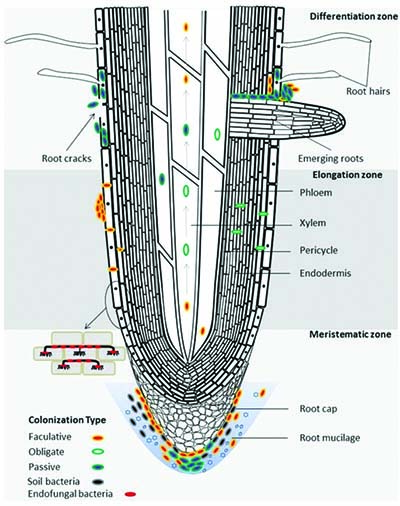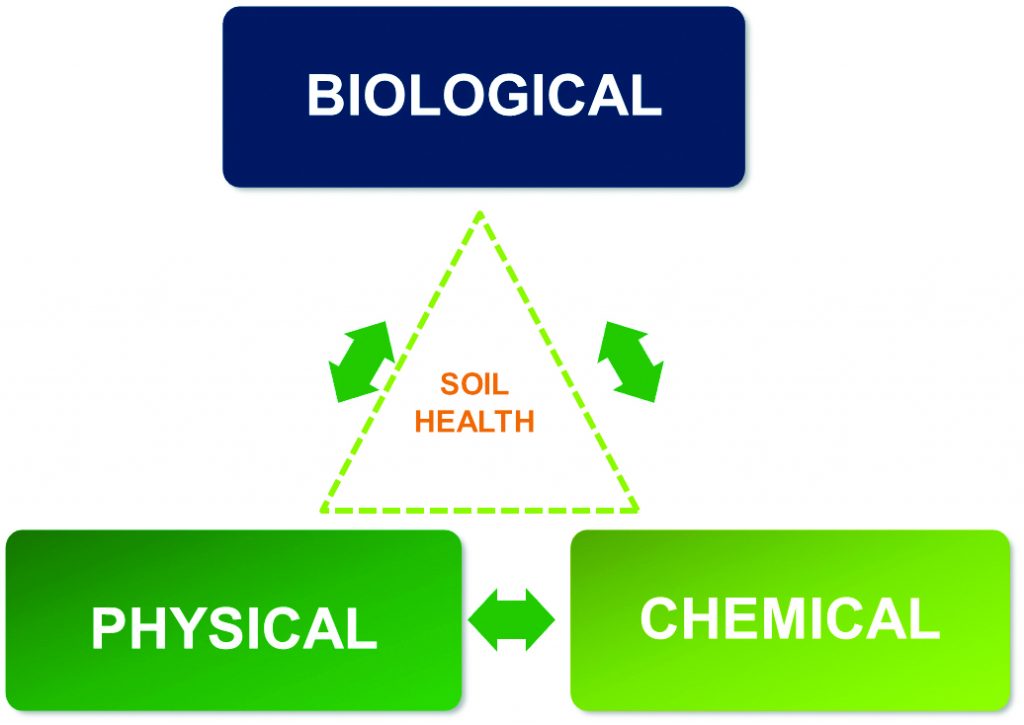The rhizosphere is a complex environment where roots interact with physical, chemical and biological properties of soil. Structural and functional characteristics of roots contribute to rhizosphere processes, and both have significant influence on the capacity of roots to acquire nutrients. Roots also interact extensively with soil microorganisms which further impact on plant nutrition either directly, by influencing nutrient availability and uptake, or indirectly through plant (root) growth promotion.
Efficient capture of nutrients from soil by roots is a critical issue for plants given that in many environments nutrients have poor availability and may be deficient for optimal growth. Whilst nutrient supply in soil is often augmented by the application of fertilizers, the availability of nutrients is governed by a wide range of physico-chemical parameters, environmental and seasonal factors and biological interactions. With intensive farming practices, the growers can do application of biology-based products to boost the microorganisms in the soil.

The target is to ensure there is a balance between the biological, physical and chemical properties of soil for sustainable yields.
Plant growth-promoting bacteria is one class of biology that growers can apply to boost crop production.
Many PGPR produce phytohormones that are considered to enhance root growth and greater surface area (e.g. bigger roots, more lateral roots and root hairs), leading to an increase in explored soil volume and thus plant nutrition.
Benefits of PGPR to plants
I. Increase in:
- Seed germination rate
- Root growth
- Yield
- Leaf area
- Chlorophyll content
- Nutrient uptake
- Protein content
- Shoot and root weights and plant heights
II. Mitigation of abiotic stress
III. Biocontrol of plant diseases
IV. delayed senescence
Most of the abovementioned effects of PGPR culminate in increased production (i.e. yield).
Bacillus spp. has been identified as one of the classes of biology that has superior growth-promoting properties.
“The top 12 performing species with plant growth benefits out of 400 isolated endophytes were all Bacillus.” Prof. Dr. Everlon Rigobelo.

Benefits of Bacillus
- Produces phytohormones (IAA, Giberellins)
- Enhances nitrogen fixation in legumes, phosphate solubilization, and pathogen resistance
- Improves moisture stress resistance and root development
- Can colonize a host plant via the stomata, tissue lesions or roots with equal results
- Consortia of Bacillus are able to retain their individual characteristics as growth promoters while allowing other members to optimize the use of resources.
What is Bacstim 100?
- Microbial product with 5 strains of Bacillus spp.
- Bacillus forms spores in poor conditions and grows when conditions improve.
- Contains 5 strains of Bacillus spp.
2 strains of Bacillus licheniformis
2 strains of Brevibacillus tetrasporus
1 strain of Bacillus amyloliquefaciens
Why Bacstim 100?
- Plants work closely with the microbes that live in & around their roots for a multitude of reasons. BacstimTM 100 is a way to introduce highly beneficial Bacillus species into the root zone to:
- Produce phytohormones encouraging root growth
- Improve nutrient mineralization and uptake
- Improve stress resistance
- Increase crop biomass and yield
- BacstimTM is produced to Omnia’s strict specifications to ensure consistent product quality and performance.
| Crop | Rate of application | Timing |
| Ornamentals | 2*1lt /ha | 4-6 times a year based on flush cycle. |
| Vegetables | 3*1lt/ha 3 | applications per season. At root flush, vegetative stage and before flowering. |
| Fruit Crops | 3 *1lt/ha | Timing 3 times a year. |
NOTE: Improved performance has been observed by combining Bacstim® 100 with Rhizovator™.
Apply 1 L/ha of Bacstim 100 tank-mixed with 5 L/ha Rhizovator per application.
